-
U.S. spends about $10 billion a year to protect the nation's digital infrastructure
U.S. intelligence agencies have designated cyberattacks as the most alarming threat to national security. The federal government is spending roughly $10 billion a year to protect the nation’s digital infrastructure, but hackers, some sponsored by nation-states, are successfully infiltrating civilian and military networks.Professionals from DHS, the Pentagon, and private contractors all work together in U.S. cyber centers to detect, prevent, respond, and mitigate incoming and existing cyberattacks. Several of the U.S. top cybersecurity labs are housed in nondescript office buildings with no government seals or signs.
-
-
"Slow slip events" could help in predicting magnitude of earthquakes, tsunamis
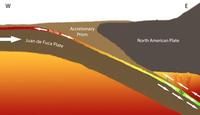
Earthquakes and tsunamis can be giant disasters no one sees coming, but now an international team of scientists has found that subtle shifts in the earth’s offshore plates can be a harbinger of the size of the disaster. The team reports that a geological phenomenon called “slow slip events,” identified just fifteen years, ago is a useful tool in identifying the precursors to major earthquakes and the resulting tsunamis. The scientists used high precision GPS to measure the slight shifts on a fault line in Costa Rica, and say better monitoring of these small events can lead to better understanding of maximum earthquake size and tsunami risk.
-
-
Water sector ready for investment, technological innovation

Investors looking for promising growth markets would do well to consider their water bill. Water’s artificially low price in most of the United States is one factor holding back innovative new water technologies, according to the report – but the time is right for change. Across the West, drought has left wide swaths of agricultural land brown, with massive wildfires raging through tinder-dry forests, residential wells tapped out and unemployed farm workers crowding food pantries. The drought is projected to cost the agricultural sector about $2.2 billion in 2014. The social and ecological damage is also profound. Technological innovation in the water sector could bring a raft of benefits ranging from the conservation of scarce water supplies to the expansion of water supplies through technologies that recycle or desalinate, for example.
-
-
Low-lying island nations say rising seas levels spell doom
The president of the Seychelles on last week urged the Earth’s small island nations to unite for a campaign against climate change — or else drown. The call came at the start of a two-day summit of the Alliance of Small Island States (AOSIS), a coalition of small islands and low-lying coastal countries, ahead of global climate talks which will take place in Lima, Peru, in December. Low-lying island nations, some of which are little more than one meter (three feet) above sea level, are regarded as among the most vulnerable to rising sea levels, which is one of the manifestations of global warming.
-
-
Porous molecules bind greenhouse gases
While carbon dioxide presents the biggest greenhouse problem, several other compounds are hundreds or thousands of times more potent in their greenhouse effect per unit of mass. These compounds include Freons, used as common refrigerants, and fluorocarbons, highly stable organic compounds in which one or more hydrogen atoms have been replaced with fluorine. Chemistry researchers have developed a molecule that assembles spontaneously into a lightweight structure with microscopic pores capable of binding large quantities of several potent greenhouse gases.
-
-
U.S. water-use at lowest levels since before 1970
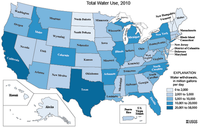
Water use across the United States reached its lowest recorded level in nearly forty-five years. According to a new USGS report, about 355 billion gallons of water per day (Bgal/d) were withdrawn for use in the entire United States during 2010. This represents a 13 percent reduction of water use from 2005 when about 410 Bgal/d were withdrawn and the lowest level since before 1970.
-
-
New app turns smartphones into sensors for an earthquake early-warning system
The MyShake app, still in test mode, uses smartphone accelerometers and locators to augment the data on incoming quakes issued by the 400 seismometers which are part of California’s ShakeAlert program.Registered phones act as additional earthquake sensors, as the app runs an algorithm which detects when the phone is still or shaking. Should several registered phones in the same area begin to shake at the same time, an earthquake alert is issued.
-
-
Court overturns manslaughter conviction of seismologists over 2009 L'Aquila quake

An appeals court in Italy on Monday overturned manslaughter convictions of six of the seven natural disaster experts and seismologists who faced prison sentences for what a lower court described as having falsely reassured residents ahead of a 2009 earthquake which killed 309 people in the central Italy city of L’Aquila. The 2012 ruling was met with outrage and dismay by the scientific community, which argued that the convictions were based on a complete misunderstanding of the science used to calculate the probability of an earthquake. Leasing scientists warned that the case could prevent scientists from offering potentially life-saving advice on natural disasters in the future.
-
-
Economists analyze Obama administration's Clean Power Plan
The Obama administration’s Clean Power Plan, released in June 2014 and seeking public comments until 1 December, aims to reduce carbon emissions from existing power plants by 30 percent (below 2005 levels) by 2030. An analysis of the Obama administration’s plan suggests that while the plan improves flexibility, allowing emissions to be reduced in cost-effective ways, additional reforms could permit further emissions reduction for the least cost.
-
-
Security experts worry BlackEnergy technology could soon be available to bad non-state actors
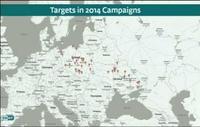
DHS a few days ago has issued a cyberthreat alert to critical infrastructure firms warning of the malicious software called BlackEnergy, a variant of a Trojan horse believed to have originated from Russian government-sponsored hackers. BlackEnergy is similar to another Russian issued malware called Sandworm, which was used in a 2013 Russian cyber-espionage campaign against NATO, the European Union, and overseas telecommunication and energy assets. DHS believes the attack on U.S. critical systems is “part of a broader campaign by the same threat actor.”
-
-
Gas can be a “bridge fuel” to a low-carbon future
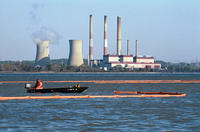
Major new suggests that gas could play an important role as a “bridging fuel” to a low-carbon economy, but warns that it will not be long before gas becomes part of the problem rather than the solution. The research combines the latest energy system modelling techniques with analysis of U.K. gas security to assess future demand.
-
-
U.S. government networks vulnerable despite billons spent on protecting them
Experts say that cybersecurity has leaped over terrorism as the top threat to U.S. security, and with the awareness of the threat comes funding better to secure government systems. There are currently 90,000 information technology security professionals working for the government, 33 percent of them are contractors. The federal government is projected to hire more cyber professionals and spend $65 billion on cybersecurity contracts between 2015 and 2020, but today, federal cybersecurity officials are still struggling to keep sensitive data from hackers and cyber criminals. Some have warned of a “Cyber Pearl Harbor” — but Pearl Harbor was a surprise. No one in business or government today can continue to plead surprise when it comes to the possibility of cyberattack.
-
-
Information sharing is key in responding to cyberattacks
Time is not your friend when your information systems are under cyberattack, but sharing threat information before, during, and after an attack with a trusted group of peers can help. Not only does it alert the other members of your community to a potential attack, it can provide critical actionable information to speed and bolster your own defenses. Participating in a formal information sharing group can greatly enhance an organization’s cybersecurity capabilities.
-
-
Energy engineers call for new, less restrictive regulatory framework for fracking
Leading energy engineers are suggesting that U.K. regulations on the surface vibrations caused by shale gas fracking are unnecessarily restrictive. The engineers state in a new paper that widely applying restrictions similar to those currently in force on fracking would require a ban on heavy vehicles from passing houses or walking on wooden floors. They also state that the threat of serious earthquakes caused by fracking activity is considerably lower than commonly feared.
-
-
New technology reduces cost to capture carbon
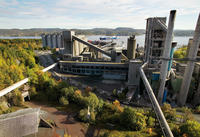
The U.S. Department of Energy’s Savannah River National Laboratory (SRNL) has signed an Exclusive Rights Agreement with Partnering in Innovation, Inc. of Orlando, Florida, in support of new carbon capture technology. Originally developed at SRNL, this approach will help open global markets for cost-effective industrial carbon dioxide (CO2) capture and re-use.
-
More headlines
The long view
Helping Strengthen America’s Critical Infrastructure
Everyday life depends on a robust infrastructure network that provides access to running water, communications technology and electricity, among other basic necessities. The experts who keep our national infrastructure secure and resilient also need a strong network to share their knowledge and train the next generation of professionals capable of solving complex infrastructure challenges.
AI and the Future of the U.S. Electric Grid
Despite its age, the U.S. electric grid remains one of the great workhorses of modern life. Whether it can maintain that performance over the next few years may determine how well the U.S. competes in an AI-driven world.
Using Liquid Air for Grid-Scale Energy Storage
New research finds liquid air energy storage could be the lowest-cost option for ensuring a continuous power supply on a future grid dominated by carbon-free but intermittent sources of electricity.
Enhanced Geothermal Systems: A Promising Source of Round-the-Clock Energy
With its capacity to provide 24/7 power, many are warming up to the prospect of geothermal energy. Scientists are currently working to advance human-made reservoirs in Earth’s deep subsurface to stimulate the activity that exists within natural geothermal systems.
Experts Discuss Geothermal Potential
Geothermal energy harnesses the heat from within Earth—the term comes from the Greek words geo (earth) and therme (heat). It is an energy source that has the potential to power all our energy needs for billions of years.
